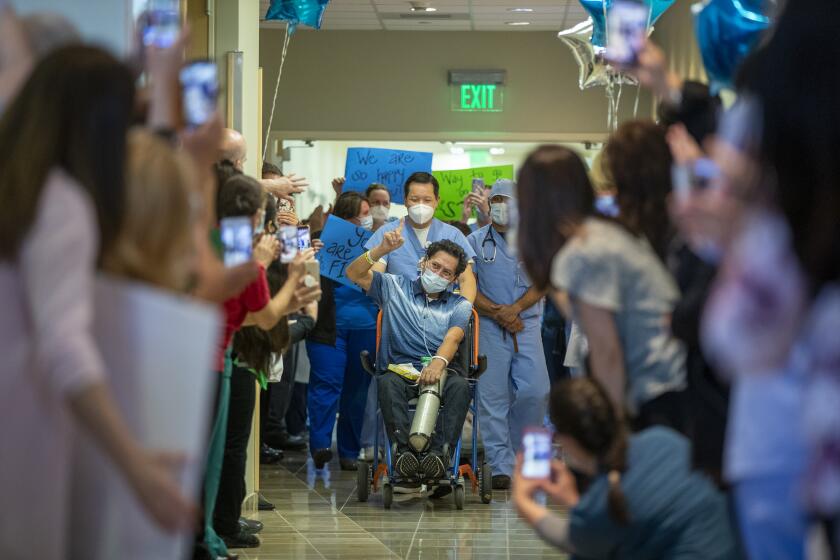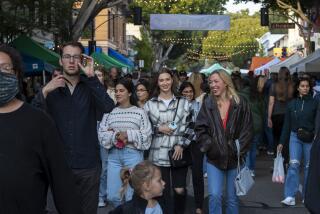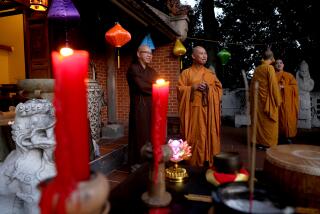A post-coronavirus California will be dramatically different. Here’s what it could look like

- Share via
What will California look like with some coronavirus restrictions lifted?
Gov. Gavin Newsom and other government officials are beginning to talk about that, and even under the best scenarios, it’s going to be a different world for some time to come.
People will still be wearing masks. School schedules might need to be staggered. Restaurants might need to be redesigned to allow for social distancing. Mass gatherings such as concerts and sporting events might have to wait a long time to come back.
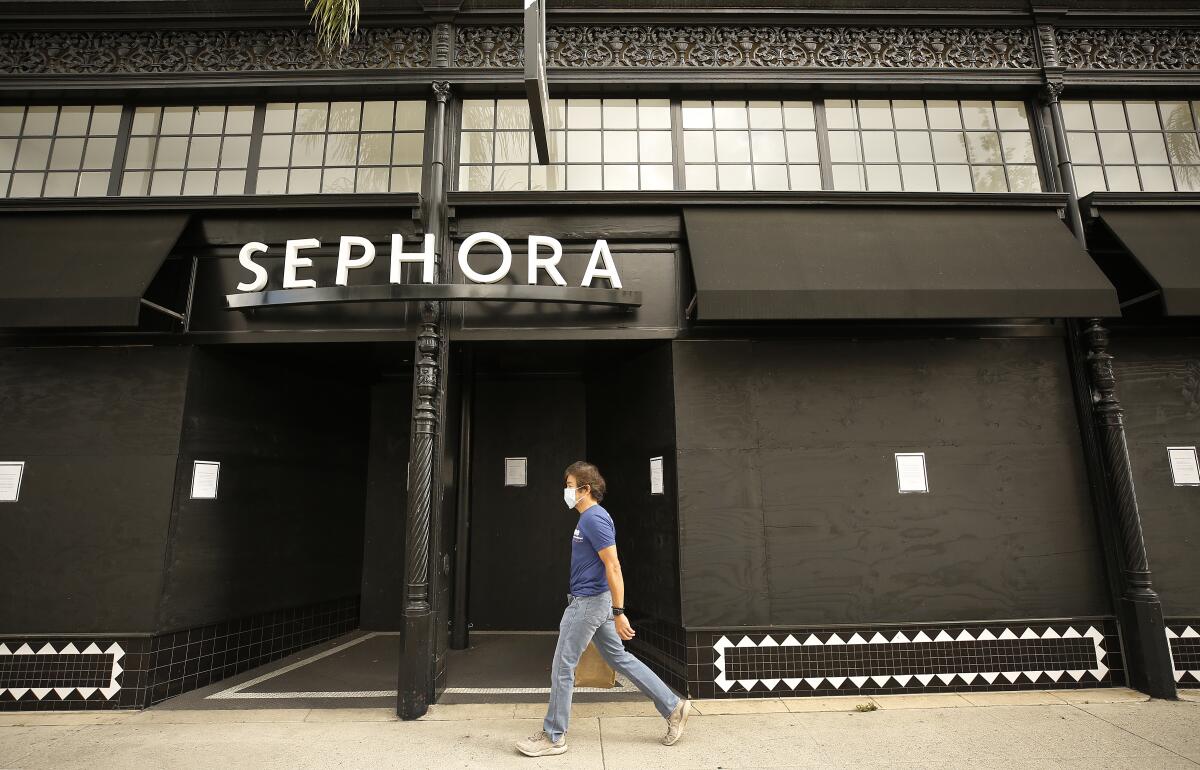
Businesses
Absent a vaccine, Newsom said Tuesday that Californians should expect to continue to wear face coverings or masks, and to visit restaurants with fewer tables, disposable menus and waiters wearing masks and gloves as the state slowly transitions back to normal.
His administration suggested the state will introduce guidelines for businesses to conduct “health checks” when employees return to work.
The governor said it’s unlikely that mass gatherings will be allowed again at any point this summer. He also discussed the possibility of staggering school start times throughout the day for students if they return to campus in the fall.
These are some of the unusual new scenes across the Southland during the coronavirus outbreak.
“We talk about what the new normal will look like. As I said, normal it will not be — at least until we have herd immunity and we have a vaccine,” Newsom said.
Diana Dooley, a chief of staff to former Gov. Jerry Brown, expects the state to allow businesses that are predisposed to social distancing, such as hair salons or certain retail stores, to reopen first before gradually expanding to other types of facilities.
Other experts have said retail stores that reopen may need to implement the social distancing measures that supermarkets have implemented: limiting the number of customers in the store at a time and having customers and staffers wear face coverings.
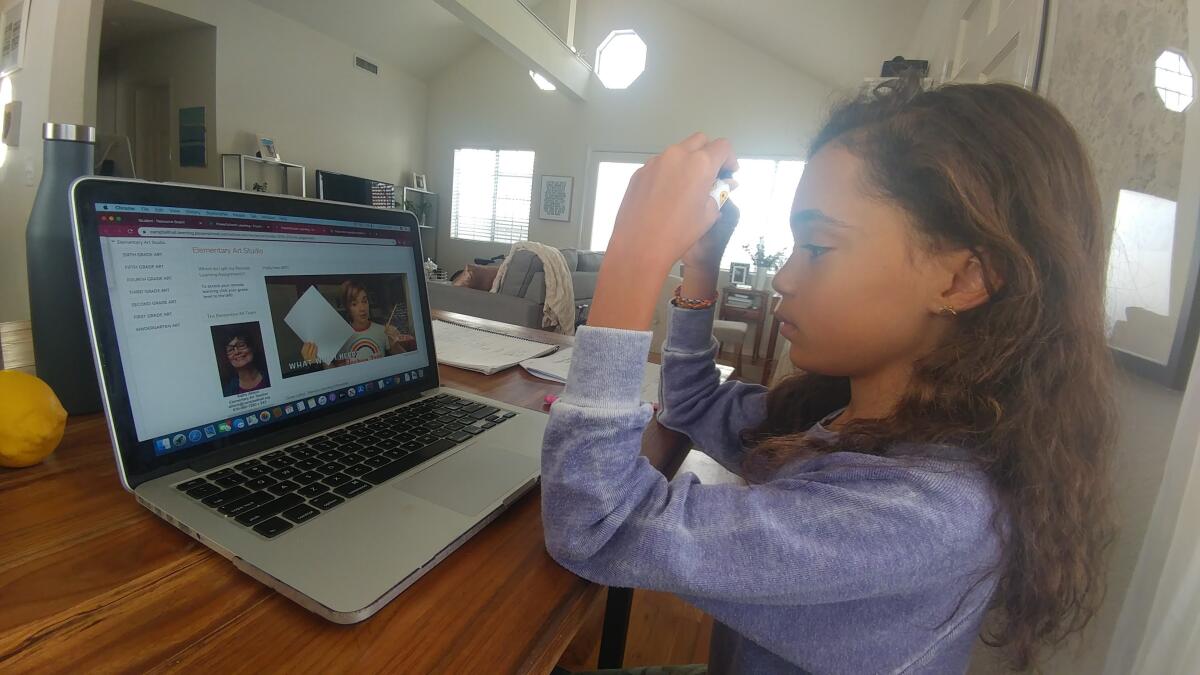
Schools
The governor said that physical distancing and other precautions against transmission of the coronavirus could remain in place for a lengthy period at schools after stay-at-home orders are lifted and California begins to gradually reopen.
School district leaders will need to begin considering a host of safety measures, he said.
“Can you stagger the times that our students come in so you can appropriate yourself differently within the existing physical environment — by reducing physical contact if possible, reducing the congregate meal, dressing issues related to PE and recess?” Newsom said. “Those are the kinds of things — those are the kind of conversations — we’re all going to be having over the course of the next number of weeks and the next number of months.”
Such precautionary measures would have a profound impact on the experience of school for the state’s 6.1 million students in kindergarten through 12th grade as well as for students attending college. Since early to mid-March, virtually all schooling in California has become “distance learning,” typically involving students and teachers interacting online.
It’s hard to make a campus virus-proof, said UC Berkeley education and African American studies professor Janelle Scott.
“The ability of things to spread is just really not controllable,” Scott said, adding that it is not uncommon for parents to catch the bugs their children bring home. “You spend the first several years of school ... sick all the time.”
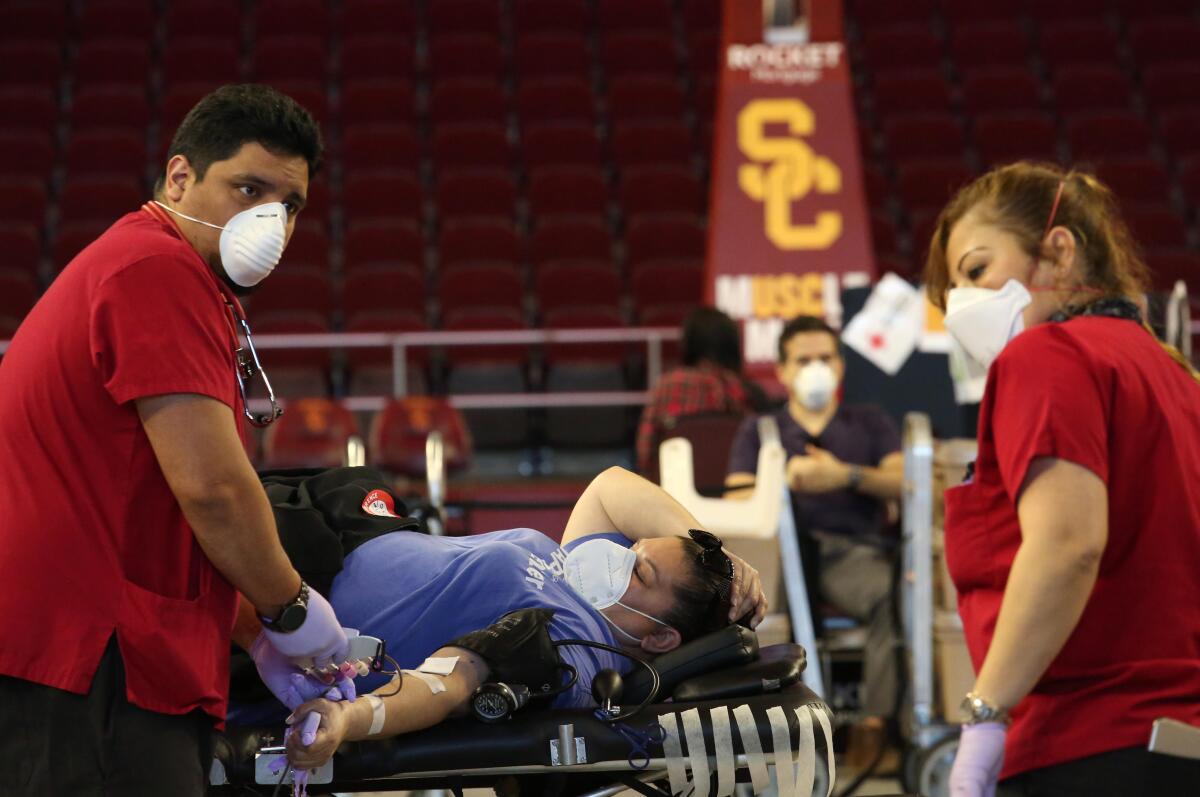
Timelines
The governor didn’t offer a specific timeline. Experts say stay-at-home orders could persist until the end of May or mid-June.
Dr. Robert Kim-Farley, a UCLA medical epidemiologist and infectious disease expert, said by that time, places that have effectively maintained physical distancing measures will see significant reductions in the numbers of cases. In the nation’s worst-hit areas, hospitals may start to see relief.
Also at this time, Kim-Farley suspects there will be enough capacity to offer tests for the virus and antibodies — to determine whether people are immune — to meet the demand.
In the early summer, perhaps in the middle of June to the end of July, there may be some nuanced, tailored approaches for getting people back to work and easing stay-at-home orders, he said.
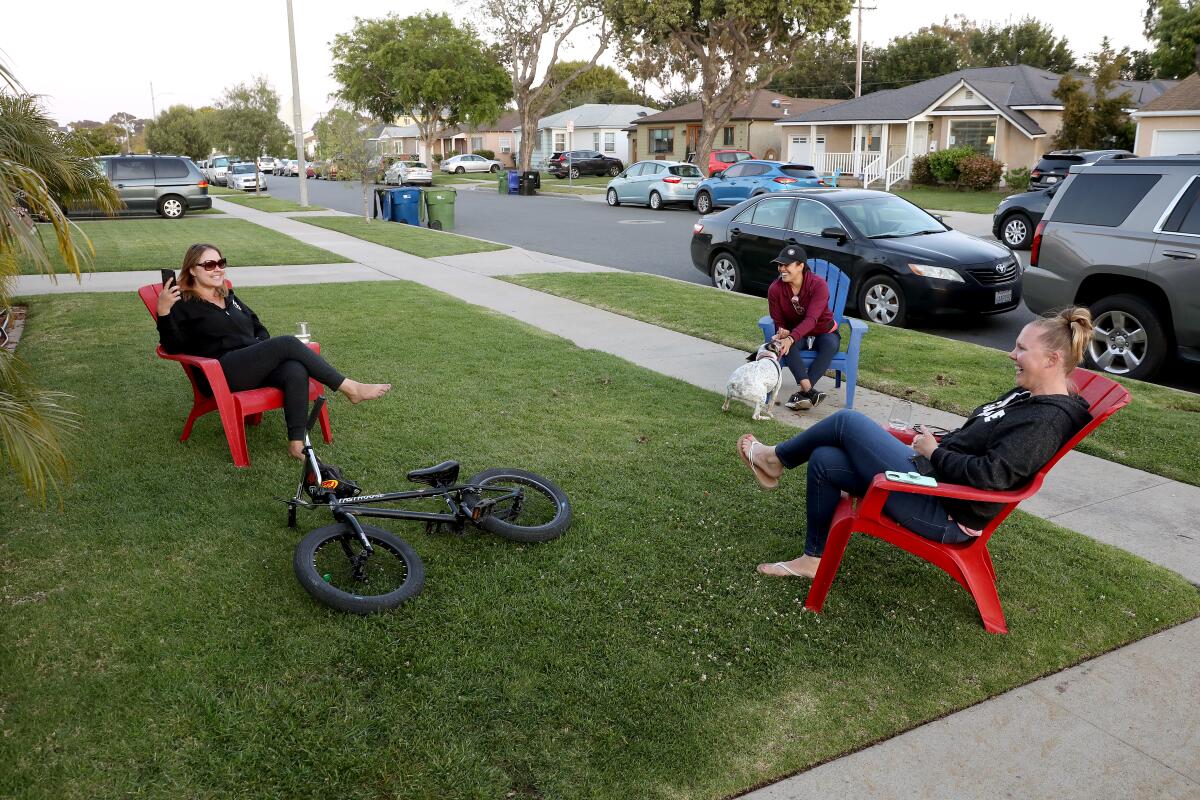
Next steps
Here are the six steps the Newsom administration deemed its road map to modifying the stay-at-home order, with questions to measure whether each has been completed.
1. The ability to monitor and protect our communities through testing, contact tracing, isolating and supporting those who are positive or exposed
- How prepared is our state to test everyone who is symptomatic?
- Do we have the ability to identify contacts of those who are positive to reduce further transmission?
2. The ability to prevent infection in people who are at risk for more severe COVID-19
- Are older Californians and the medically vulnerable living in their own homes supported so they can continue appropriate physical distancing?
- Have we developed a plan to quickly identify and contain outbreaks in facilities housing older Californians, those living with disabilities, those currently incarcerated and those with co-morbidities?
3. The ability of the hospital and health systems to handle surges
- Do we have adequate bed capacity, staff and supplies, such as ventilators and masks?
- Can our healthcare system adequately address COVID-19 and other critical needs?
4. The ability to develop therapeutics to meet the demand
- Have we built a coalition of private, public, and academic partners to accelerate the development of therapeutics?
- Have we identified potential therapeutics that have shown promise?
5. The ability of businesses, schools and child-care facilities to support physical distancing
- Have we worked with businesses to support physical distancing practices and introduced guidelines to provide health checks when employees or the general public enter the premises?
- Do we have supplies and equipment to keep the workforce and customers safe?
6. The ability to determine when to reinstitute certain measures, such as the stay-at-home orders, if necessary
- Are we tracking the right data to provide us an early warning system?
- Do we have the ability to quickly communicate the need to reinstate these measures?
More to Read
Sign up for Essential California
The most important California stories and recommendations in your inbox every morning.
You may occasionally receive promotional content from the Los Angeles Times.
